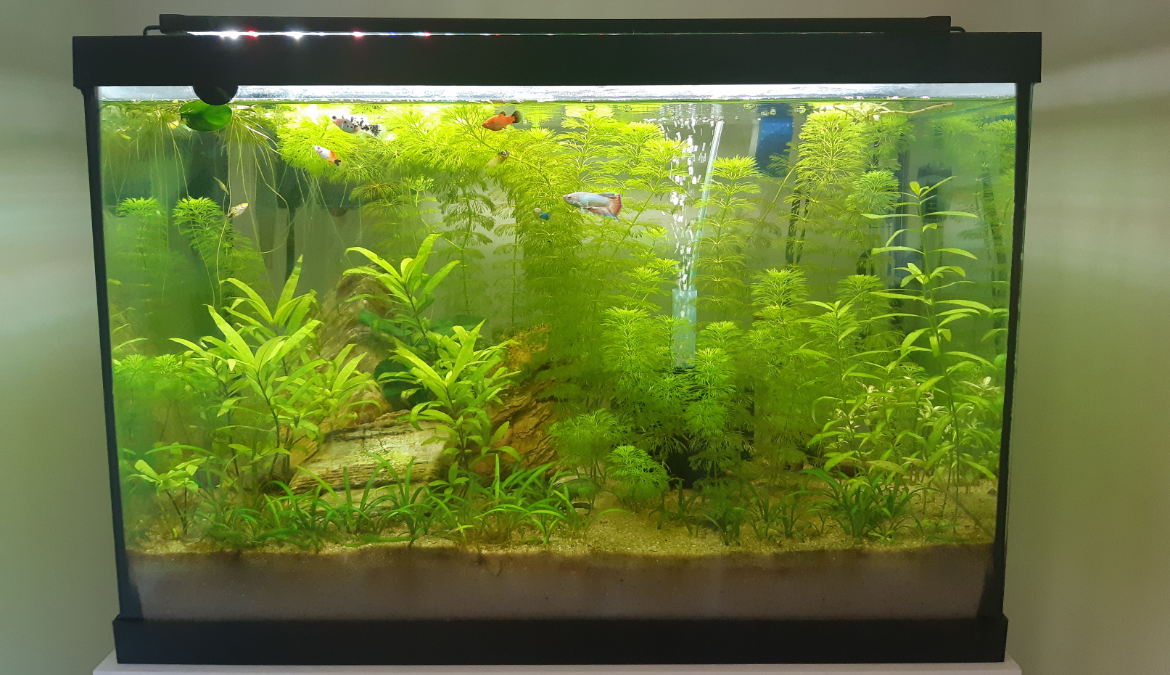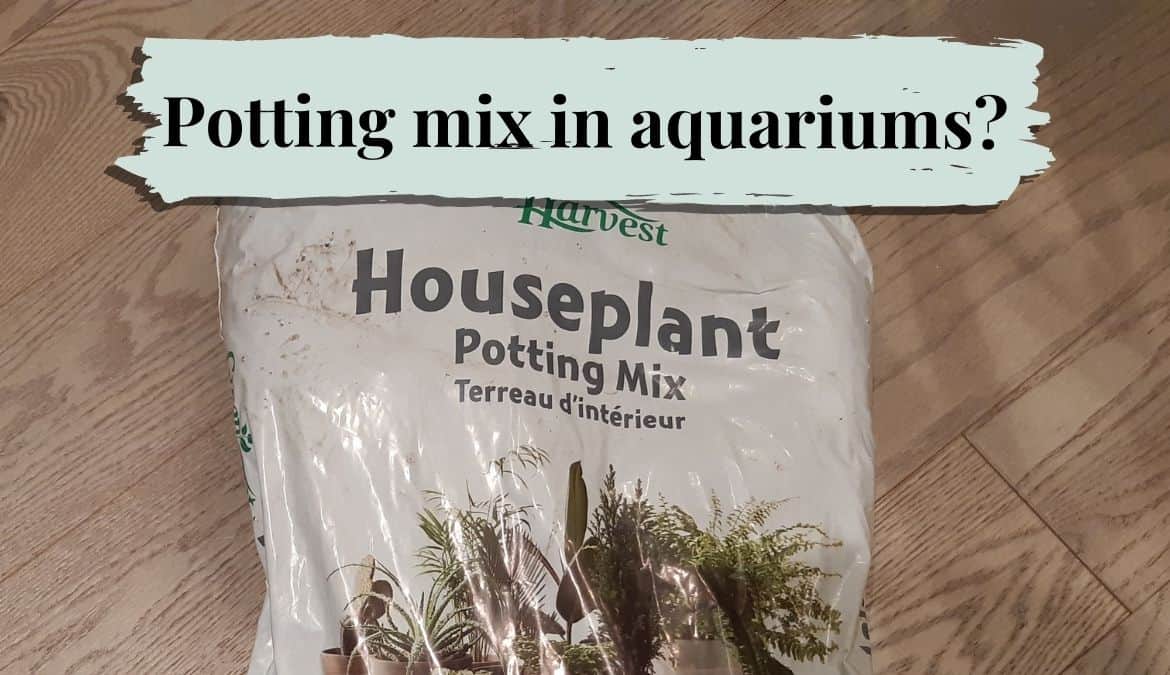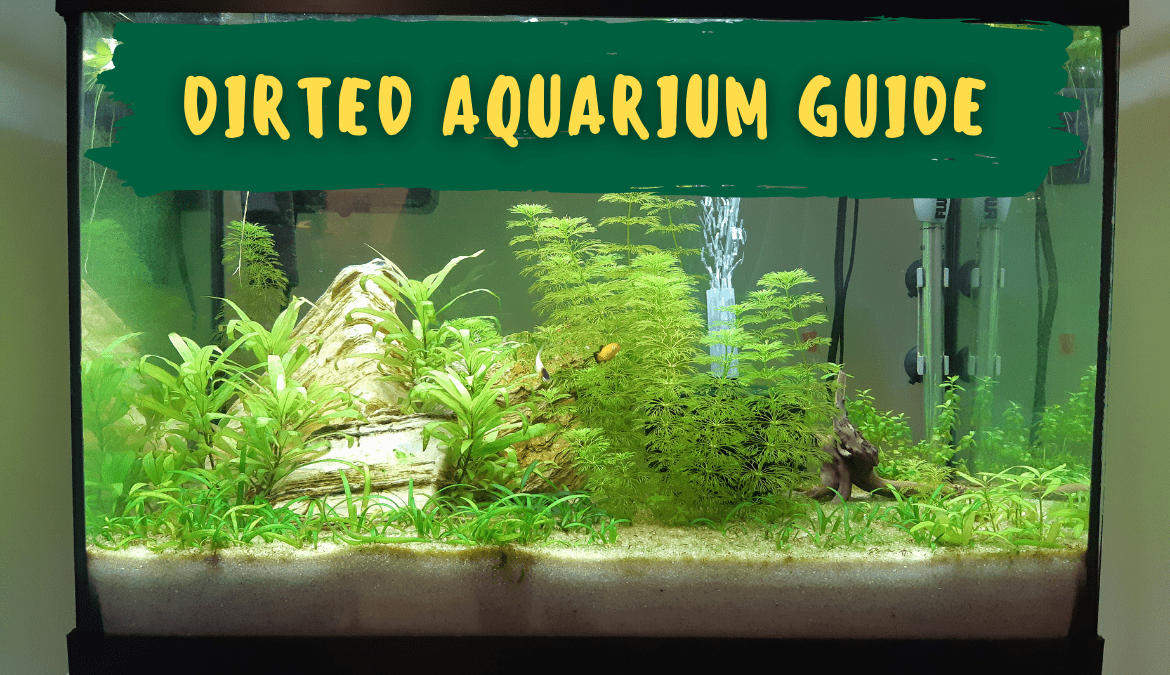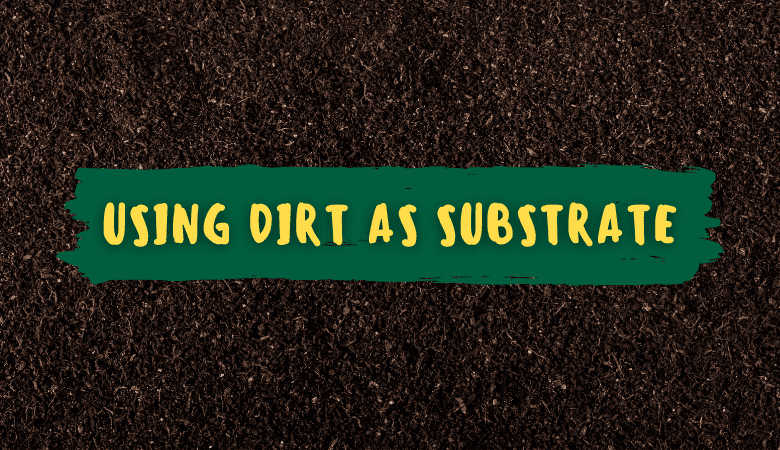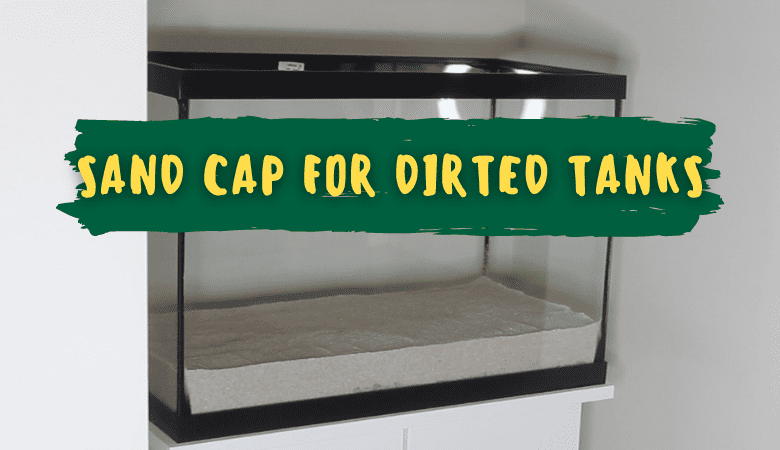Organic dirt can be safely used as an aquarium substrate when it is capped with 2-inches of inert sand or gravel. It’s also important to establish a nitrogen cycle before adding fish and to try not to uproot plants after they’ve been planted.
Dirt substrate provides an excellent source nutrients for aquatic plants. In this article, we will explore how to use it safely.
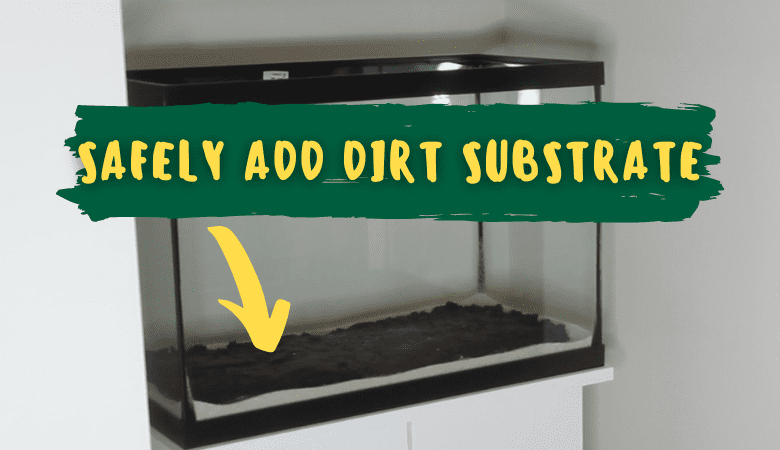
How to eliminate risks when using a dirted substrate
Dirt is an incredibly effective and rewarding substrate to grow aquarium plants with. As with anything we put into our aquariums, we need to make sure it’s safe for our fishy inhabitants.
Here are the five things you need to consider before adding dirt to your freshwater tank:
Have a 2-inch sand or gravel cap to prevent cloudy water
A substrate cap is a layer of insert sand or gravel that covers the bottom dirt layer. The substrate cap prevents the dirt from escaping and leeching into the water column. This prevents the water column from getting cloudy and saturated with a high ammonia concentration.
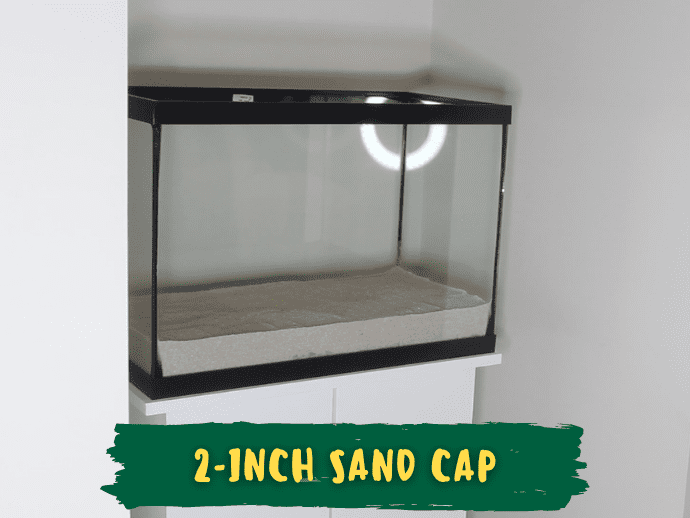
Add a sand or gravel border along the bottom perimeter of your tank
We recommend adding your capping substrate around the bottom perimeter of your tank to keep the dirt away from the edges. The glass edges around your aquarium are vulnerable places for dirt to leach upwards into the water column.
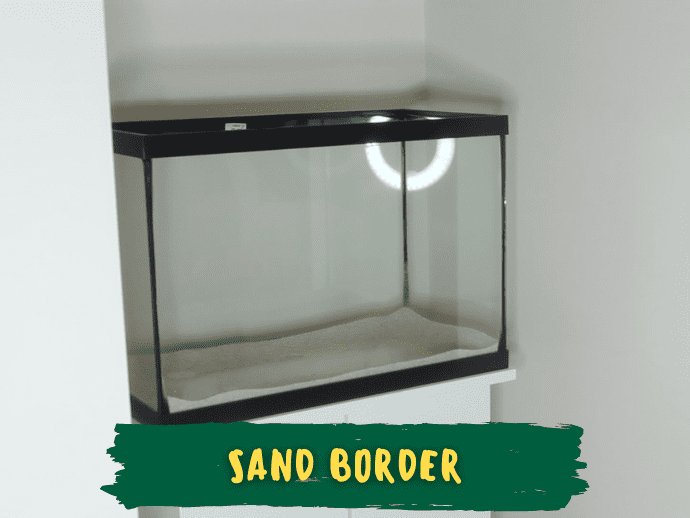
This perimeter prevents this from happening.
Don’t uproot plants or disturb the substrate
Pulling up plants with established root systems will cause dirt to leech into the water column. It’s best practice to propogate plants by cutting their stems and replanting.
You can still uproot them if you’re careful, but it’s not recommended to do this frequently. Dirted tanks might not be ideal for fishkeepers who intend on selling plants and must uproot them frequently.
Wait until your nitrogen cycle has established
The best way to keep fish safe in any aquarium is by establishing a nitrogen cycle before stocking. This means having large enough colonies of nitrosomonas and nitrobacter to safely convert the bioload of your fish.
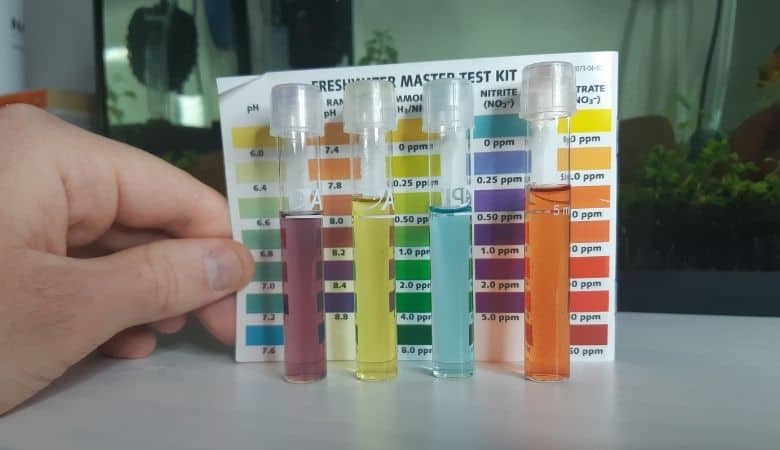
We measured 0ppm of ammonia and nitrite after the first couple days of setting up our 20-gallon dirted tank. However, after about 3-4 days we noticed a large ammonia spike despite there being no fish or other artificial ammonia sources.
Our guess is that the ammonia was leeched by the dirt layer as it was getting settled and releasing excess gas that was trapped beneath. Day 16 is when we achieved a finished cycle.
Use organic topsoil or organic potting soil
Organic topsoil or potting soil is necessary for dirted aquariums. Non-organic soils contain added fertilizers, pesticides, herbicides and other chemicals that may be harmful to fish.
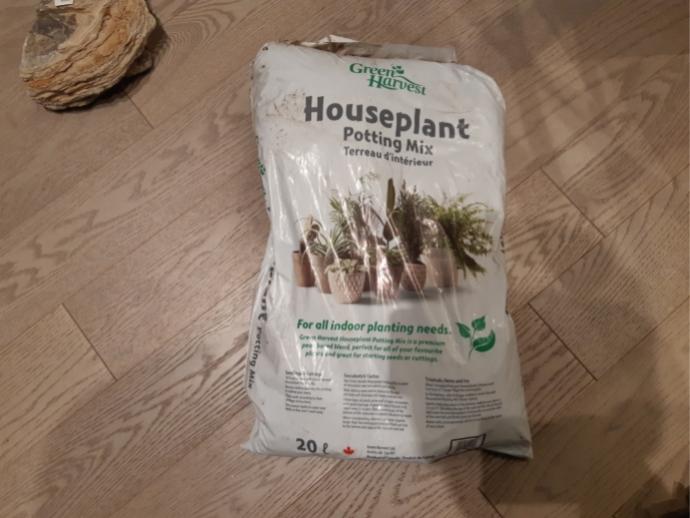
Organic products are legally mandated in most countries to contain no synthetic fertilizers and a slew of other articifially added chemicals.
Some fishkeepers choose to mix their soil with other ingredients to provide added plant nutrition. But you can also use just organic soil on its own.
Possible issues to avoid with dirted aquariums
Dirted aquariums have established a tough reputation among many fishkeepers because of three key reasons. What many aquarists don’t realize is that two of these issues have simple and reliable solutions and the other is misunderstood.
Dirted substrate clouds the water column
The least severe issue is that dirt substrate will cause cloudiness if it escapes into the water column. This is an issue that fishkeepers will experience with many commercial substrates, but is especially true with dirt.
The problem most fishkeepers take with cloudiness is that it reduces visibility and doesn’t look very nice.
Solution: A 2-inch sand or gravel cap will prevent this from happening.
Ammonia leeching into water column
Dirt exposed to the water column will also cause severe ammonia spikes with more organic soils because they are packed full of nutrients. This is harmful for fish, but also plants if the concentration of ammonia is too high.
Solution: The substrate cap and minimal plant uprooting will prevent this.
Anaerobic bacteria
Anaerobic bacteria is one of the main reasons fishkeepers believe dirted substrate should be avoided. Anaerobic bacteria is a special type of bacteria that grows in anoxic environments with no oxygen.
The dirt does not create an anoxic environment. But dirted tanks are usually capped with a thicker-than-normal layer of inert substrate to keep the dirt out of the water column. This thick cap layer is what can cause anoxic pockets to form.
Solution: Nitrate-reducing anaerobic bacteria is beneficial. Sulfate-reducing anaerobic bacteria will not harm fish.
Why anaerobic bacteria is believed to be bad
There are different types of anaerobic bacteria. One of them takes sulfate (SO4) and converts it into hydrogen sulfide gas (H2S), which is toxic to fish.
The belief is that hydrogen sulfide will harm your fish as it rises up through the substate and enters the water column. However, hydrogen sulfide is safely converted back into harmless sulfate when it comes into contact with oxygen.
This begins to occur in the upper layer of your substrate, which contains oxygen. If it is not completely converted by that point then it will convert as soon as it contacts oxygen in the bottom layer of the water column.
Hydrogen sulfide becomes dangerous to fish when there is no oxygen present to convert it into sulfate. But if there is no oxygen in the aquarium then you have bigger problems to worry about as your fish will start suffering from oxygen deprivation.
You will observe oxygen deprivation symptoms before hydrogen sulfide would pose a risk.
How to make sure you have enough oxygen in your aquarium
The easiest solution is to add an air stone. The bubbles they create will pop at the surface and create surface agitation. This agitation creates a larger surface area to allow oxygen gas exchange to occur.
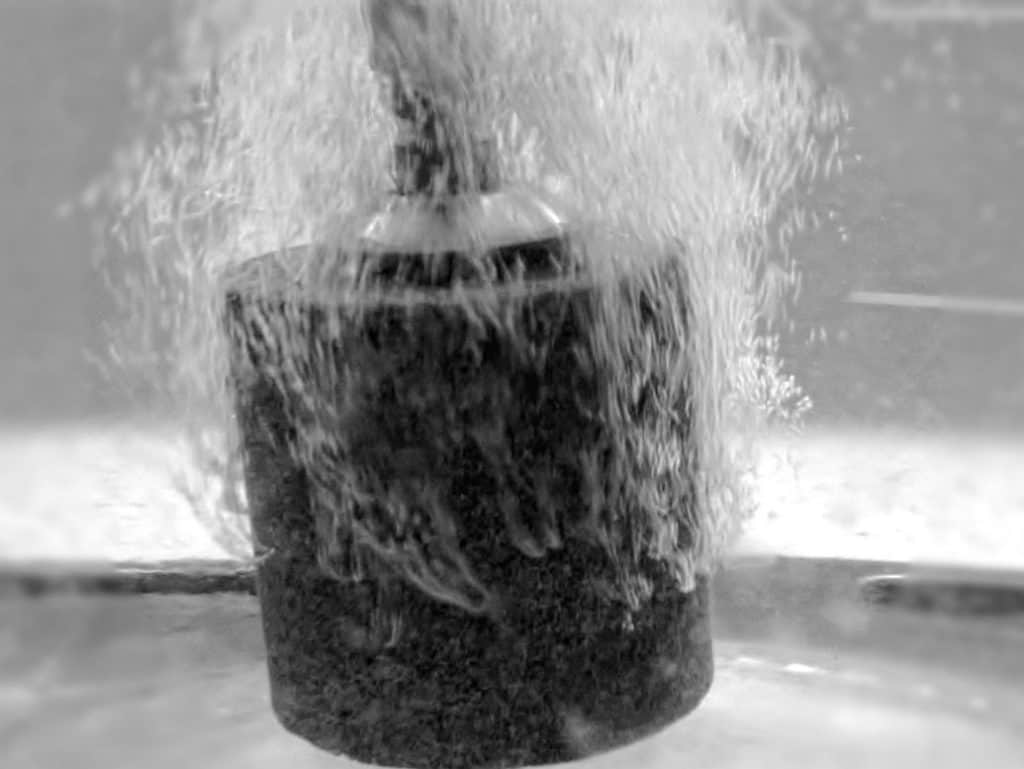
Another solution is to pack your tank full of plants. Plants take in carbon and convert it into oxygen.
Why anaerobic bacteria is actually beneficial
Besides the sulfate-reducing bacteria that produces hydrogen sulfide, there are beneficial nitrate-reducing anaerobic bacteria that play a tremendoulsy beneficial role in an aquatic ecosystem.
This type of bacteria, also called denitrifying bacteria, uses nitrate (NO3) to produce nitrogen gas (H2), which is harmless to fish and is what 78% of our atmosphere is made up of.
Normally, we can only lower nitrate concentrations with water changes. But colonizing beneficial denitrifying bacteria accomplishes this for us instead.


